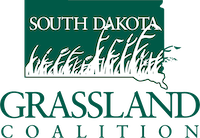Delve deeper into the Yellow Bluestem’s tactics. From allelopathy to its camouflaged growth, we’ll uncover its secrets.
Early detection of the invasive Yellow Bluestem (Bothriochloa ischaemum) is critical for effective management and preventing the plant from altering your landscape.
When to Spot Yellow Bluestem:
Early Spring: Yellow Bluestem often starts to green up and grow earlier in the spring compared to many native grasses. Keep a close eye on your pastures and rangelands during the initial growth stages.
Late Summer and Early Fall: This is when Yellow Bluestem typically forms seed heads. The appearance of these seed heads can be a significant indicator.
After Disturbances: Yellow Bluestem can be particularly opportunistic after disturbances like overgrazing, fires, or soil disturbance. Monitoring such areas is essential.
How to Spot Yellow Bluestem:
Distinctive Seed Heads: Look for the unique seed heads of Yellow Bluestem. They can be identified by their silvery to reddish-purple appearance when mature. The seed heads later become fluffy and yellowish to whitish, resembling a “turkey foot” shape.
Plant Characteristics: Yellow Bluestem typically grows in clumps or bunches. The leaves are long and narrow, with a distinctive keel running down the center.
Growth Pattern: Observe the growth pattern, especially if you notice a grass species taking over an area in a creeping manner, forming dense mats. This could indicate Yellow Bluestem.
Allelopathy: If you notice that other plant species are struggling to grow in the presence of a dominant grass species, it may be a sign of Yellow Bluestem’s allelopathic effects.
Soil and Site Conditions: Yellow Bluestem often thrives in areas with disturbed soils or overgrazing. Pay attention to areas with these conditions, as they may be more susceptible to infestations.
Seek Expert Help: If you suspect the presence of Yellow Bluestem but are uncertain, consult with local agricultural extension offices, rangeland specialists, or botanists who can help with identification.
